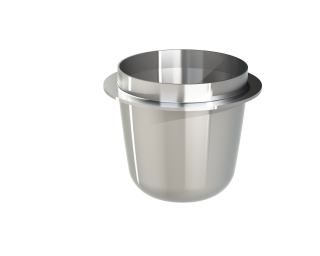Choosing a Platinum Crucible
One of the most valuable tools of the analytical chemist is the platinum crucible. Platinum crucibles are commonly used for XRF sample preparation, wet chemistry, ash testing, and Loss on Ignition (LOI) applications.
Platinum crucibles are made with just enough strength required for use in the chemical laboratory. Typically, platinum crucibles and their covers weigh about as many grams as they hold in cubic centimeters. Hence, a platinum crucible with a volume of 25 cubic centimeters weighs 25 grams, including the cover.
Making Platinum Crucibles
This production guideline determines and restricts the thickness of the platinum crucible’s bottom and side wall. The crucibles are crafted from platinum sheets cut into discs or blanks that are rotated over steel forms. During spinning, the discs are pressed with a follower that has a face covering the bottom of the crucible. In doing this, a platinum crucible bottom always has the thickness of the original sheet, and the platinum crucible wall becomes gradually thinner from the bottom to the rim. Other methods like pressing or deep drawing can also be used to form the circular blanks into platinum crucibles.
Pure platinum and popular platinum alloys are typically used to make crucibles. When platinum-rhodium is used, crucibles are made from even thinner sheets, as this alloy is somewhat harder.
All platinum crucibles have a very fine crystal grain. This grain is sometimes achieved by the meticulous hammering of the metal after the spinning process. The best crucibles are considered to be those with the smallest crystal grain.
Crucible Care
Platinum crucibles can have a long life if they are cared for properly. After use, a crucible should be mechanically cleaned. They can be kept in water or a 10-percent hydrochloric acid solution. Water can remove any salts, and hydrochloric acid converts oxides into chlorides, which can then be cleaned off by rinsing.

Selecting a Crucible
Platinum crucibles from XRF Scientific are available in a number of different alloys.
Pure platinum crucibles have a melting point of more than 1770 degrees Celsius. Crucibles made from 100 percent platinum have excellent resistance to chemical deterioration.
Platinum crucibles with 5 percent gold have melting points ranging from 1670 to 1750 degrees Celsius, which in practice can be used in applications up to 1200 degrees Celsius. This alloy has a higher temperature strength than 100 percent platinum, has a unique non-wetting property when exposed to molten glass, and generally has the most straightforward sample removal. This alloy is widely considered the premier material for spectrographic evaluation by x-ray fluorescence (XRF).
Platinum crucibles with 3.5 percent or 10 percent rhodium have a melting point from 1780 – 1850 degrees Celsius. Rhodium alloys supply superior hardness and strength compared to other platinum alloys, which makes it them more desirable for harsh conditions. The more rhodium content a platinum crucible has, the longer it should hold its shape under the hottest furnace conditions.
Platinum crucibles with 10 percent iridium have a melting point of nearly 1790 degrees Celsius. Physical strength and resistance to thermal corrosion rise with the higher iridium content in a platinum crucible.
If you would like any more information about platinum crucibles from XRF Scientific, please contact us.









